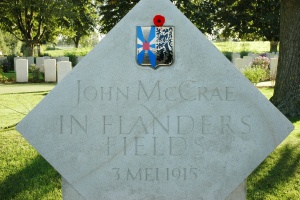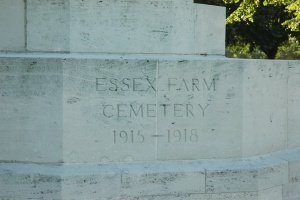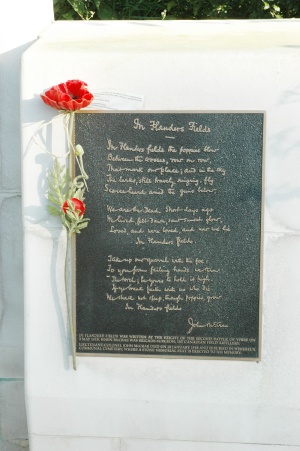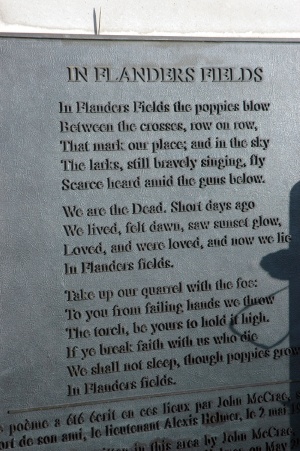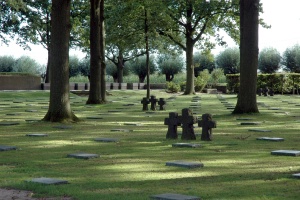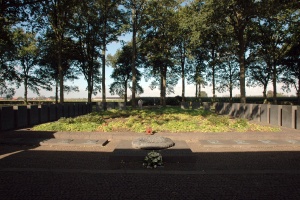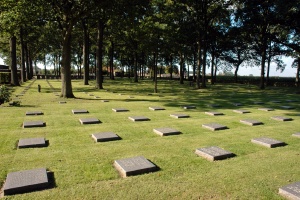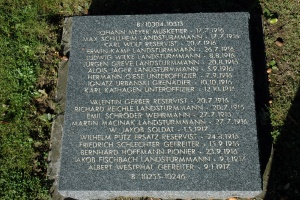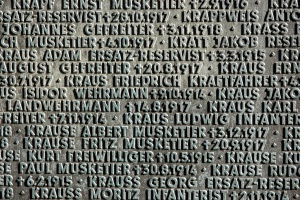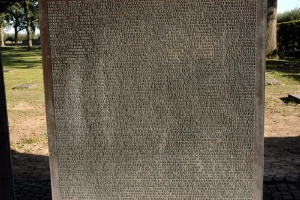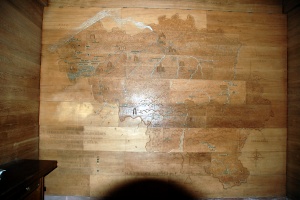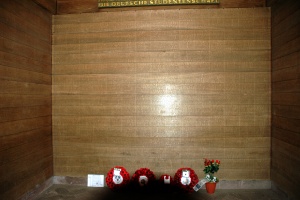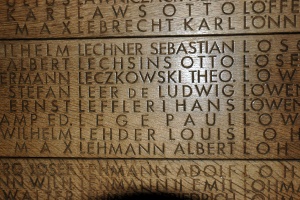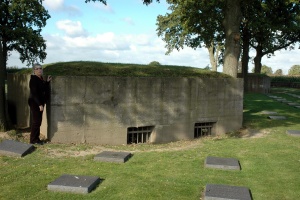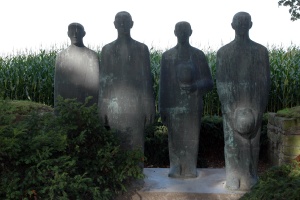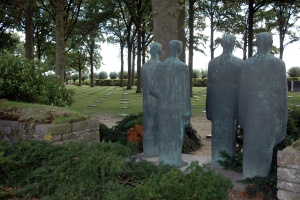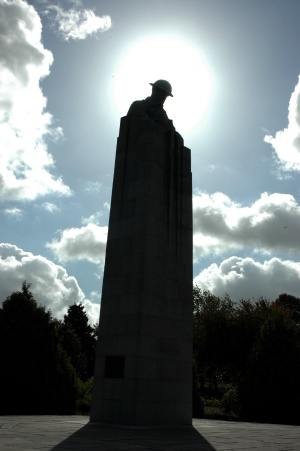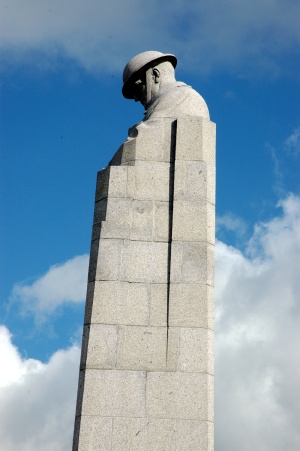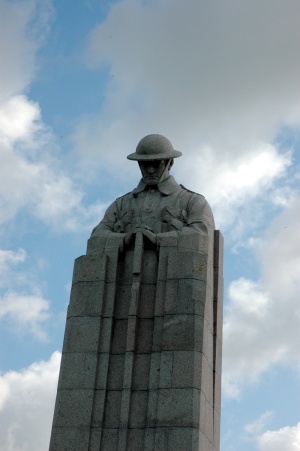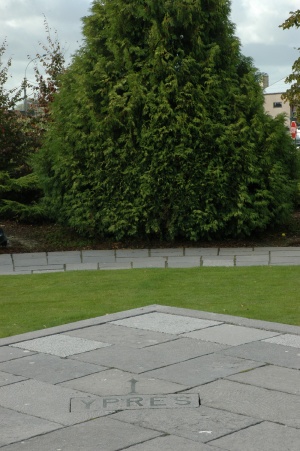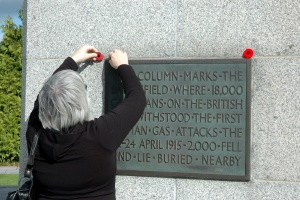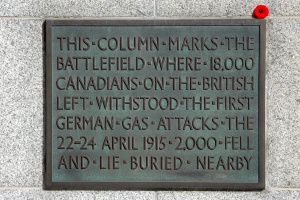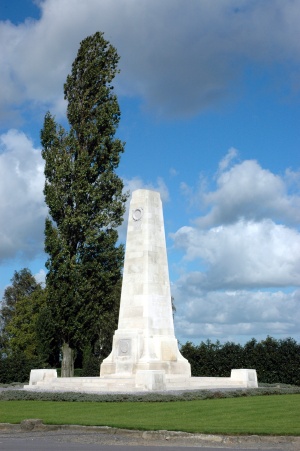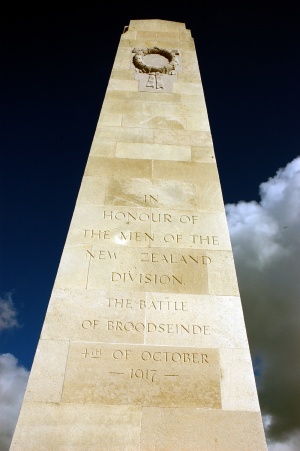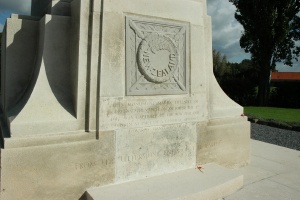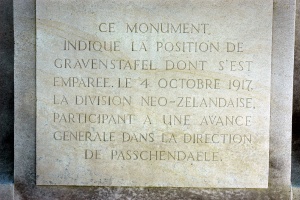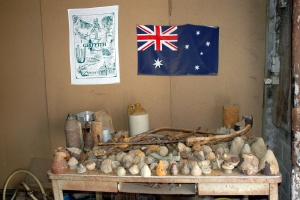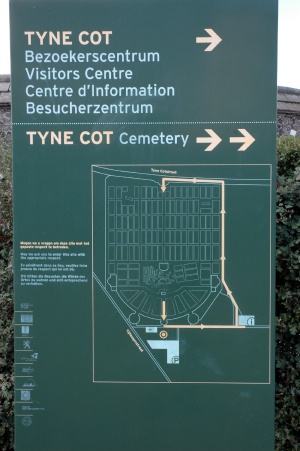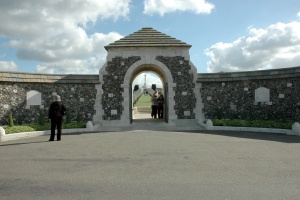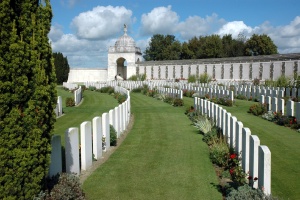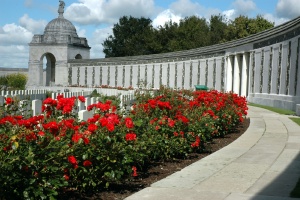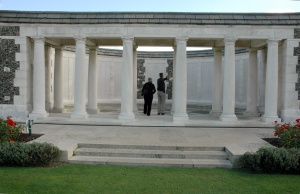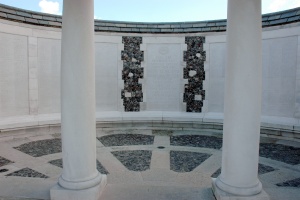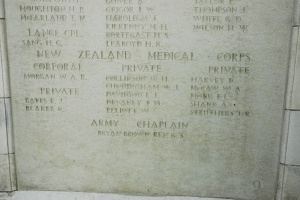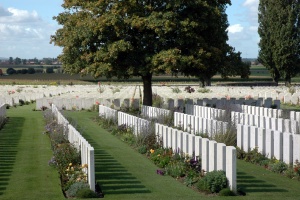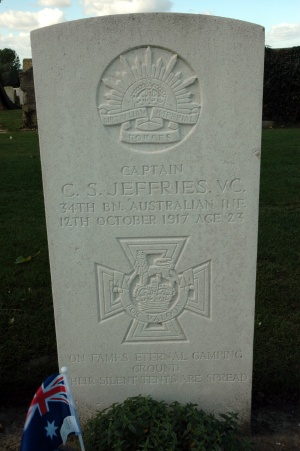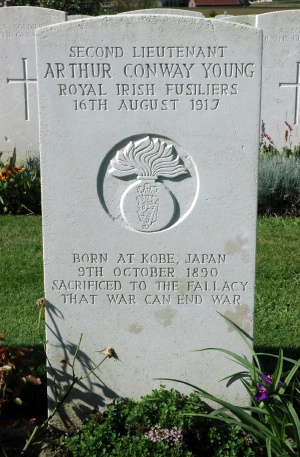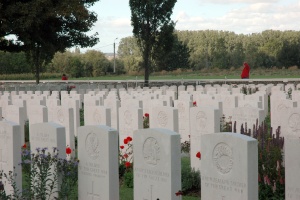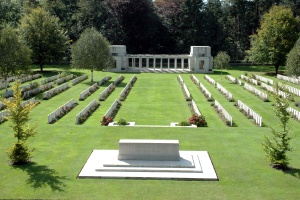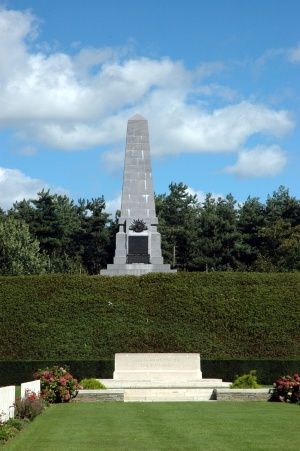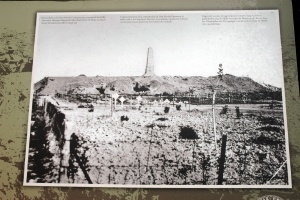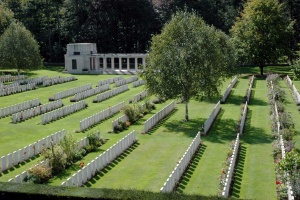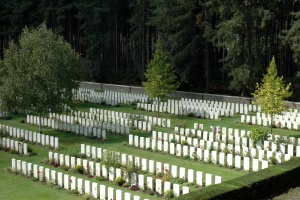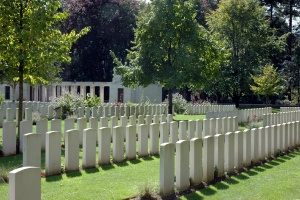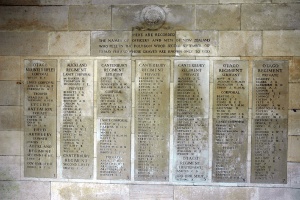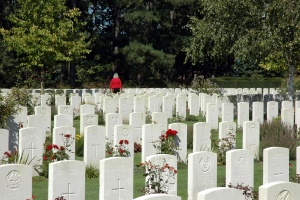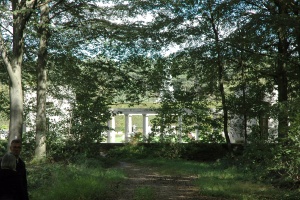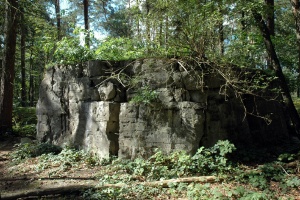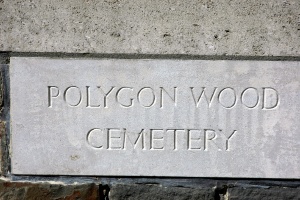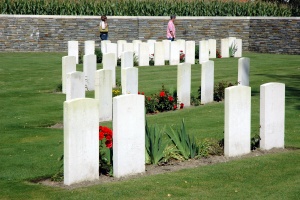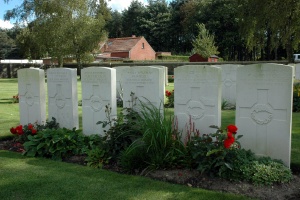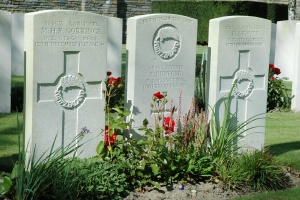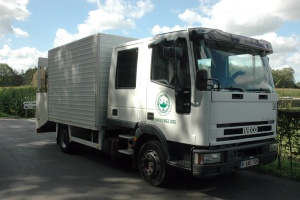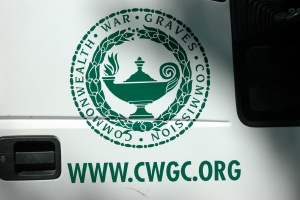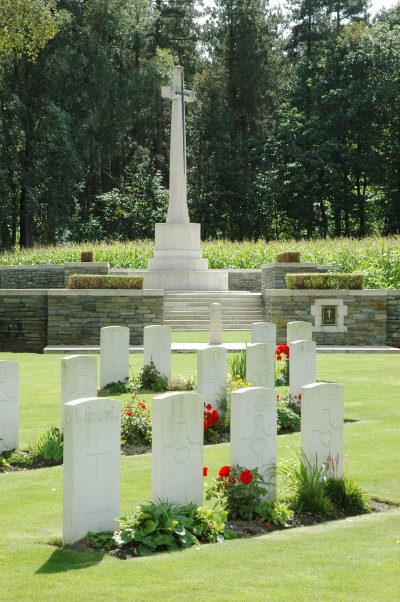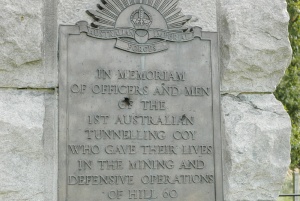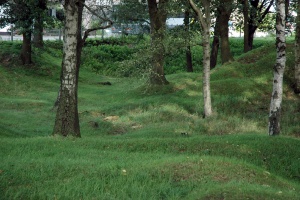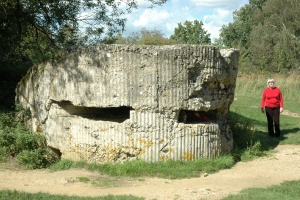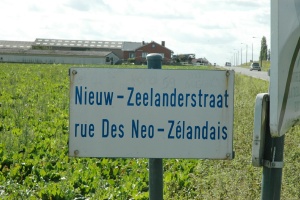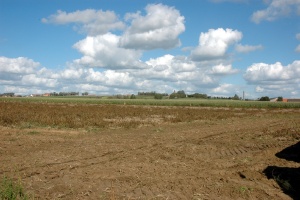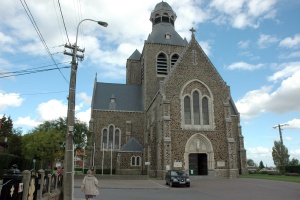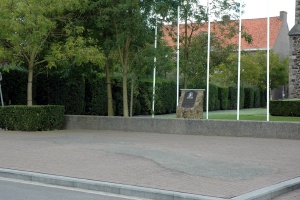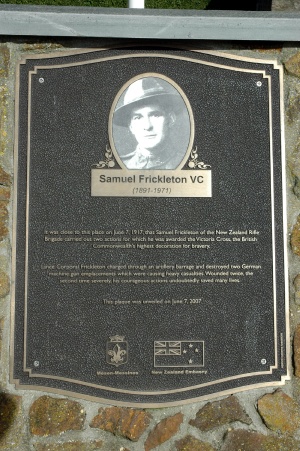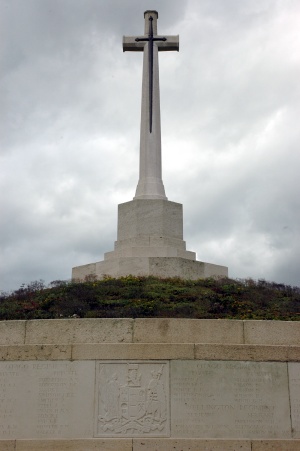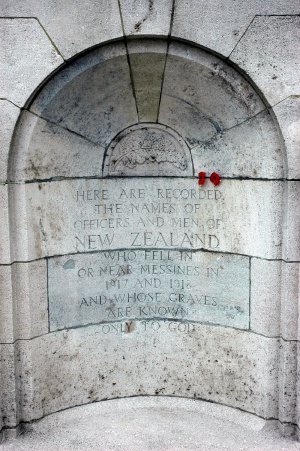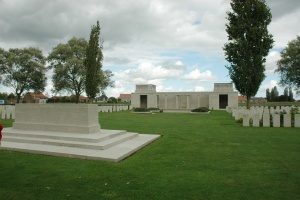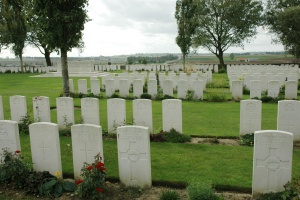Britain 2011 - Day 5IntroductionWednesday. We were now in Ypres and ready for Day 3 of the tour. After a hearty breakfast at the Ariane Hotel, we were met outside by our new guide ready to take us around the Belgium sites known as Passchendale. It was another lovely morning, clear, sunny - and rather cool. Our first stop, in the early sunshine was Essex Farm, where John McCrae, a Canadian medic, penned and then discarded the poem that has come to symbolise WWI - "In Flanders Fields". From there we visited a large German cemetery, hidden away close by. Then it was on to the large New Zealand cemetery at Tyne Cot, then Polygon Wood, Hill 60, Messines and finally La Basseville. We then headed for the train station at Lille and boarded the Eurostar back to London. Essex Farm, YpresJust outside Ypres we stopped at Essex Farm, where John McCrae penned and discarded his poem - "In Flanders Fields". There is a memorial to McCrae and his poem here. Langemark German CemeteryMany people who visit Flanders and Passchendale wonder where the German cemeteries are - and that is the way the French wanted it. The German Army had the luxury of being able to return their dead back home to their familes, but the family was asked to pay and many did not. So, according to the Treaty of Versailles, the German cemeteries were to be hidden away and were to be marked by black crosses. Beside the main road out of Ypres lies Langemark Cemetery, hiddenby a hedge and canopy of trees. The dark surroundings and black stones are a marked contract to the brightness and light of the Commonwealth versions.
The first Canadian cemeteryOur next stop was the striking Canadian Memorial. This was the site of the Canadian's first action, and one of the first times that Mustard Gas was used in the war. Fortunately for the Canadians, and the nearly Australians, one of the Candians recognised the smell and knew that the gas broke down in water. The word went out to use wet clothes over the face and nose, thus saving many men from a horrible fate. The memorial is striking. It first appears as a conventional cenotaph, but when you look to the top, it is surmounted by a soldier resting on his reversed rifle.
New Zealand Memorial at BroodseindeClose to Passchendale is the New Zealand memorial of the Battle of Broodseinde, 4 October 1917. This is a traditional cenotaph memorial, as are many of the early New Zealand sites here. Across the road from the memorial was a large strawberry farm. This farmer, like many in the region regularly uncovers lumps of iron.
Tyne CotTyne Cot is one of the largest British and New Zealand cemeteries in the region. It is also one of the most visited with a large bus park at the rear. The cemetery lies on a gentle slope, with the main entrance at the lowest point, although most people arrive by bus and enter from the top.
Buttes New British Cemetery and Polygon WoodButtes is a combined British, Australian and New Zealand Cemetery, with the Australian memorial sited on a high hill overlooking the cemetery. Adjacent to Buttes is the New Zealand addition of Polygon Wood.
Hill 60Hill 60 was one of many mining operations, this one undertaken by Australian tunnellers. It was the subject of a recent Australian television drama based on the diary of one of the miners.
New Zealand Street and the NZ memorialOn Messines Ridge lies the New Zealand memorial. Below it running across ploughed fields is Nieuw-Zeelanderstraat - New Zealand Street.
Messines Church, the Frickleton Memorial and the New Zealand Memorial at MessinesOur last stop on the tour was the village of Messines. First was the church, where the New Zealander Frickleton won his Victoria Cross. The church is also noted for its defence by one young Adolf Hitler. Just down the road is the New Zealand memorial, including a section to those with no known grave.
From Messines, we drove south to Lille and into the rather large and grand Railway Station. Afer a short break, we joined the queue for the Eurostar, only to be confronted by the Immigration people asking why we had not filled in departure cards. In typical Gallic fashion these cards were only available AFTER you had passed the immigration counter, so you filled them in then had to go back, against the flow of people to hand them in. It was not worth the trouble to ask why they thought it important to do it the wrong way round. I suspect they could not see any problem with it at all. So onto the Eurostar and a quick, uneventful trip back to London (it wasn't 9/11 after all). We walked back to the same hotel and concluded that the three days in France were well worth the cost and effort. Back to previous day Last updated: 16/06/2017 |
||||||||||||||||||||||||||||||||||||||||||||||||||||||||||||||||||||||||||||||||||||||||||||||||||||||||||||||||||||||||||||||||||||||||||||||||||||||||||||||||||
